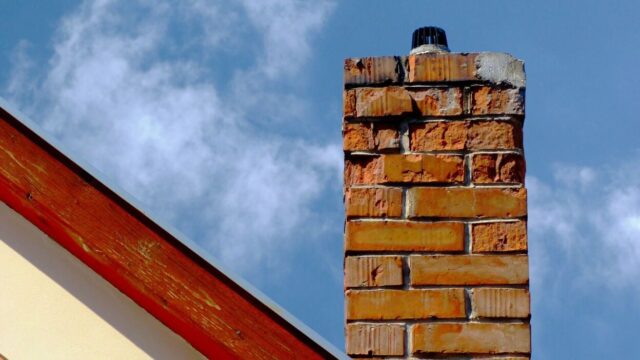
Though you probably don’t think about yours often, a chimney is a vital part of keeping your home safe and healthy to live in. A house produces a lot of dangerous stuff, from fireplace smoke to exhaust from gas appliances, and the chimney is how they leave the building (and your breathable airspace). A failing chimney isn’t just an eyesore, it’s a danger to your health—every year more than 400 people die from carbon monoxide poisoning, and many of those deaths are attributable to a chimney in need of repair.
That makes chimney maintenance an absolute priority, including periodic inspections and seasonal preparation. But even if you do everything right, there’s a good chance your chimney will eventually fail—and knowing the warning signs could possibly save your life. Here are the signs that your chimney needs attention.
Bad smells
Your chimney is where a lot of the bad gases produced by your house are supposed to go. They rise up and out, so you aren’t bothered with bad odors or smothered you in your sleep. If you have a wood-burning fireplace, a smokey smell is pretty normal (and kind of nice), but if you’re smelling smoke all the time, or if you smell sulfur or a more “chemical” smell like burning plastic, your chimney might be blocked or your liner might be cracked. That means dangerous gases and fumes are leaking into the house, and your chimney needs attention.
A more subtle sign that your chimney might need repair or maintenance comes when you dry your clothes. Your dryer should be vented separately from your chimney because of the danger of lint buildup and fires, but if that vent is located close to your chimney and your house fills with the damp scent of dryer sheets every time you dry your clothes, it might indicate a cracked flue or liner that is allowing those fumes to infiltrate back into the house.
Moisture
Your chimney is obviously located on your roof, and is open to the elements to some extent. It should have a cap on top that keeps rain from pouring down into your home, so any signs of water infiltration around the area is a sign that your chimney is in trouble. There are a few ways this can manifest:
Peeling wallpaper: If wallpaper in an area below your chimney starts to peel away from the wall, it might indicate that your chimney isn’t venting properly and moisture is getting trapped in your walls. This can be a lot more subtle than a full-on water leak but can still damage your walls, cause mold—and absolutely indicates your chimney needs an inspection pronto.
Water stains or leaks: If you see water stains or leaks below your chimney, the problem could be as simple as repairing the flashing on your roof, or it could mean that your chimney is cooked and is letting water penetrate. Getting a professional roofer to inspect the area is your best bet.
White staining on chimney masonry: If you look at your chimney’s exterior and see what staining, it’s probably efflorescence, which is a deposit left behind when moisture evaporates. Efflorescence by itself is pretty harmless, but it usually indicates a problem with your chimney’s seal—water is seeping into the brick. This needs to be addressed before the water seepage does real damage.
Crumbling masonry
Another sign that your chimney is going to betray you—or already has—is its physical integrity. If you take a look at your chimney and can see any of the following signs, you should schedule an inspection immediately:
Spalling. Spalling bricks are never a good sign. Spalling occurs when moisture is getting into the chimney bricks, freezes, and expands. Large sections of the brick then turn to dust and crumble away, leaving behind visible damage.
Shaling. If your chimney has a clay flue liner, one sign of a serious problem is finding thin slices of the liner in your fireplace or anywhere around the chimney base. This indicates that the liner is cracked and deteriorating, so it’s no longer doing its job to protect your chimney and may be leaking fumes into the house.
Mortar damage. If the mortar—the cement-like stuff between the bricks—on your chimney is missing or crumbling, the structure of your chimney has been compromised and it needs immediate repair and possible replacement.
Rust
Another clear sign of chimney problems is rust anywhere in your fireplace, especially the damper (the mechanism that opens and closes the chimney to your fireplace). Rusted components indicate that moisture is getting in where it shouldn’t, which means some aspect of your chimney has been compromised. It might be that it needs a new cap, or it might mean the masonry is leaking and needs to be repaired and sealed. Whatever the cause, it’s time to call for an inspection.
Animals
If you’ve ever had an adventure with an animal getting into your fireplace or inside your walls—a squirrel, raccoon, or possum, for example—you might be tempted to write it off as a one-time incident. But you should stop and ask yourself how the critter got in there in the first place. If the animal was discovered inside the chimney, or if there’s no other possible entry point that you can identify, then your chimney’s cap may be damaged or missing, or the structure of the chimney may have degraded to the point where your animal friends can find their way inside. Either way, it’s a serious problem and your chimney needs some serious attention.







